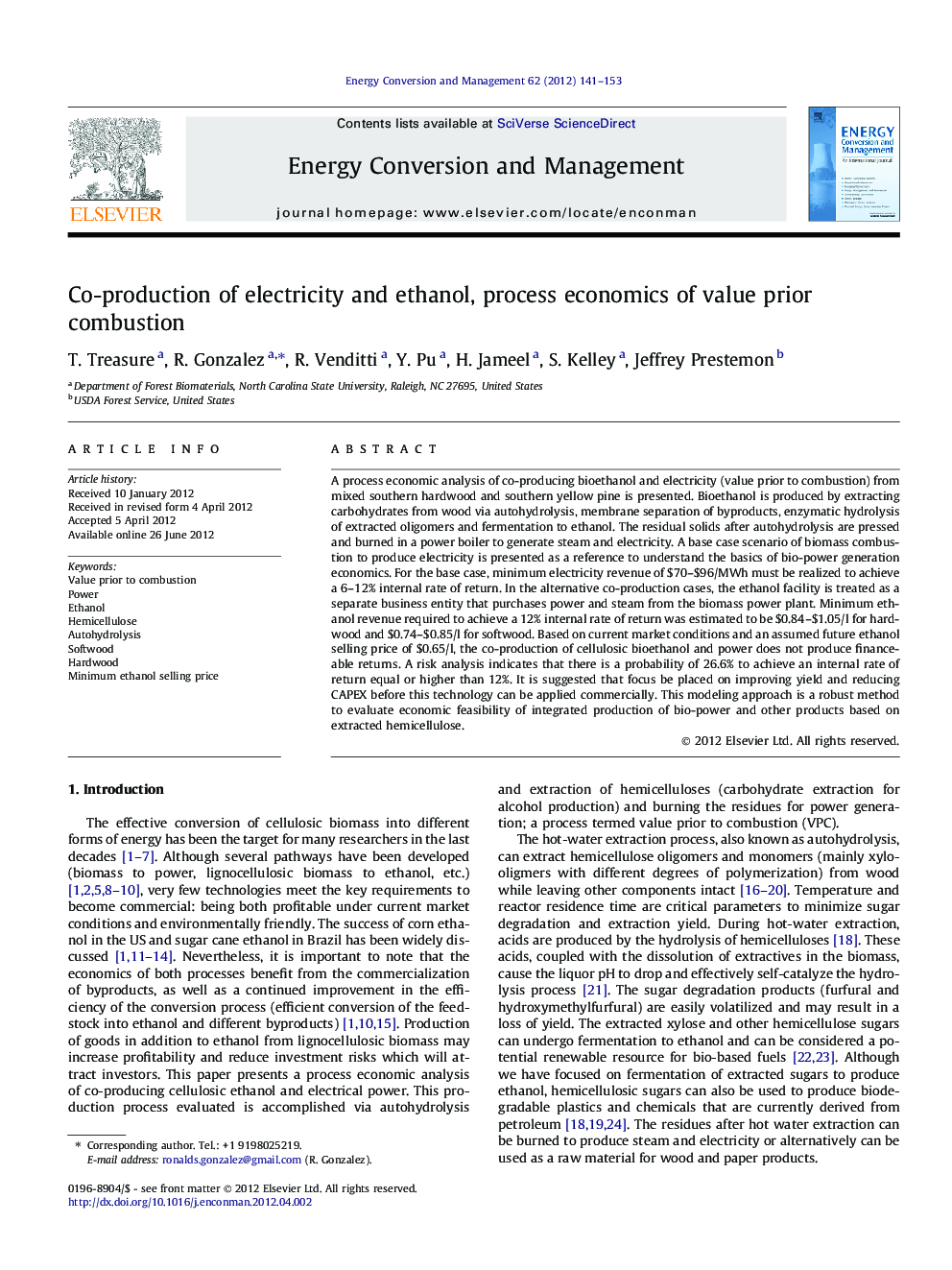| کد مقاله | کد نشریه | سال انتشار | مقاله انگلیسی | نسخه تمام متن |
|---|---|---|---|---|
| 761188 | 1462900 | 2012 | 13 صفحه PDF | دانلود رایگان |

A process economic analysis of co-producing bioethanol and electricity (value prior to combustion) from mixed southern hardwood and southern yellow pine is presented. Bioethanol is produced by extracting carbohydrates from wood via autohydrolysis, membrane separation of byproducts, enzymatic hydrolysis of extracted oligomers and fermentation to ethanol. The residual solids after autohydrolysis are pressed and burned in a power boiler to generate steam and electricity. A base case scenario of biomass combustion to produce electricity is presented as a reference to understand the basics of bio-power generation economics. For the base case, minimum electricity revenue of $70–$96/MWh must be realized to achieve a 6–12% internal rate of return. In the alternative co-production cases, the ethanol facility is treated as a separate business entity that purchases power and steam from the biomass power plant. Minimum ethanol revenue required to achieve a 12% internal rate of return was estimated to be $0.84–$1.05/l for hardwood and $0.74–$0.85/l for softwood. Based on current market conditions and an assumed future ethanol selling price of $0.65/l, the co-production of cellulosic bioethanol and power does not produce financeable returns. A risk analysis indicates that there is a probability of 26.6% to achieve an internal rate of return equal or higher than 12%. It is suggested that focus be placed on improving yield and reducing CAPEX before this technology can be applied commercially. This modeling approach is a robust method to evaluate economic feasibility of integrated production of bio-power and other products based on extracted hemicellulose.
► Economics of producing cellulosic ethanol and bio-power in the same facility using an autohydrolysis process.
► Feedstock considerably affect the economics of the biorefinery facility.
► Lower moisture content improves financial performance of the bio-power business.
Journal: Energy Conversion and Management - Volume 62, October 2012, Pages 141–153